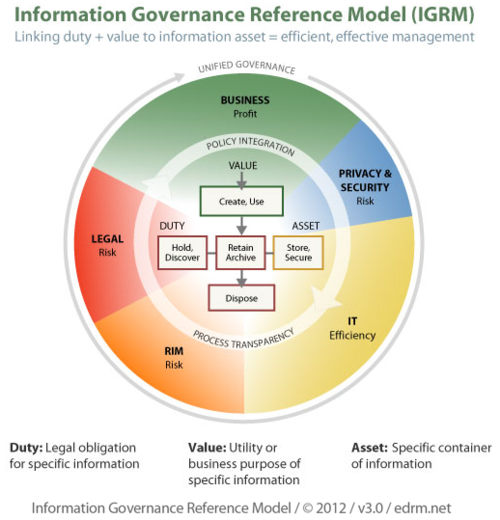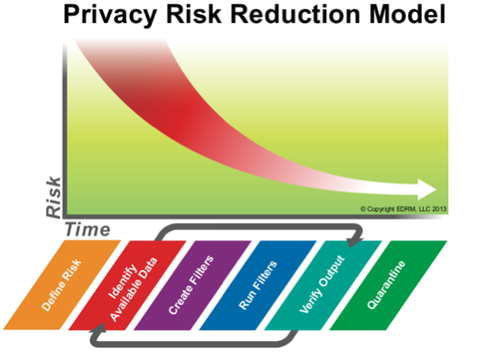This is the tenth of the 2014 LegalTech New York (LTNY) Thought Leader Interview series. eDiscoveryDaily interviewed several thought leaders after LTNY this year (don’t get us started) and generally asked each of them the following questions:
- What significant eDiscovery trends did you see at LTNY this year and what do you see for 2014?
- With new amendments to discovery provisions of the Federal Rules of Civil Procedure now in the comment phase, do you see those being approved this year and what do you see as the impact of those Rules changes?
- It seems despite numerous resources in the industry, most attorneys still don’t know a lot about eDiscovery? Do you agree with that and, if so, what do you think can be done to improve the situation?
- What are you working on that you’d like our readers to know about?
Today’s thought leader is Ralph Losey. Ralph is an attorney in private practice with the law firm of Jackson Lewis, LLP, where he is a Shareholder and the firm’s National e-Discovery Counsel. Ralph is also a prolific author of eDiscovery books and articles, the principal author and publisher of the popular e-Discovery Team® Blog, founder and owner of an online training program, e-Discovery Team Training, with attorney and technical students all over the world, founder of the new Electronic Discovery Best Practices (EDBP) lawyer-centric work flow model. Ralph is also the publisher of LegalSearchScience.com and PreSuit.com on predictive coding methods and applications.
What significant eDiscovery trends did you see at LTNY this year and what do you see for 2014?
The presentation that I did at the show was called the “John Henry moment”, and I presented with Cliff Dutton, who is a technology expert at AIG (not an attorney, but an expert with technical processes in electronic discovery). The other panelist was Jason Baron (whose own thought leader interview from last week can be found here). Cliff, Jason and I were examining at LegalTech what comes next after predictive coding. What is the inevitable direction that technology is taking? That was really the theme behind the “John Henry moment”. A similar question was asked by other panels, but, and of course I’m prejudiced, I think our panel had some particularly good, unique insights.
Before I get into the answer that emerged from our panel, I will say that other panels were focusing on other parts of the technology world. They were talking about things like data breach and privacy – those are two big issues that we’ve seen in the past, but they seem to be emerging even stronger than before and were big issues in the keynote speech. It appears to be a surprise to some people that there is crime on the Internet. Many of us are quite aware of that – I had to change my credit card just a couple of months ago. So, data breaches, either on purpose by a hacker or unintentional through negligence, and data privacy are certainly big issues.
These were not the issues that Jason, Cliff and I talked about. Instead, we were talking about the advancement into the second machine age. This is something that has been discussed by the New York Times and also in a best-selling book called The Second Machine Age: Work, Progress, and Prosperity in a Time of Brilliant Technologies. It has to do with the application of ever more sophisticated computer algorithms that allow us to replicate what the human mind is capable of doing and to automate not just manual labor, but automate the mental labor of mankind. Of course, what we’re focused on is its application to lawyers – what we lawyers do that can now be improved, enhanced and automated.
Now, in the past, the big discussion has been on predictive coding and this is certainly an example of the application of advanced computers and what is being called “analytics” – taking big data and understanding the implications of big data. Examples outside the law include Netflix, that takes your viewing history and tells you about a new movie they have that you’re going to like, and Amazon who takes you buying history and suggests books that you’re going to like. They’ve both analyzed your data. So, what we were discussing is how this concept will impact the law. That’s really an important topic that our panel addressed that I had an opportunity to follow up on recently in my blog (that parodied the movie Minority Report, which had something called “pre-crime”), called “pre-suit”. Not “pre-crime”, but “pre-suit”. I’ve already (surprisingly) been able to get the URL for presuit.com and it discusses corporate counsel using what I call “smart data” to predict and prevent litigation before it happens. That’s what our panel discussed and I think that’s really the next big thing (with all due respect to people that are focused by privacy and data breach issues). So, I think the next big thing is to apply data analytics and the latest advancements in artificial intelligence to get a much better handle and control on litigation than we have today.
The idea behind “pre-suit” is essentially to win your next lawsuit before it’s even filed. Jason Baron also recently wrote an article about it in Law Technology News (Escape From the Island of E-Discovery), which I didn’t know about when I wrote my article – he showed it to me the day of our panel session. He talks about three examples of using data analytics for something other than predictive coding: the first two are data remediation for information governance purposes and records classification to, for example, classify and file your emails for you. The third one he calls “bad conduct detection” – I call it the use of smart data to predict and prevent a cause of action from occurring – basically, when employees within your company are doing something that could be a basis for a lawsuit.
He wrote about it in the article and, independently, I had the same idea I (at least I think I did – Jason is alleged to have mind control abilities!). In my blog, I wrote about how this “pre-suit” concept will work and this isn’t based on science fiction, it’s based on technology that’s available today. We have the technology to detect patterns of wrongful activity that are there. In corporate email and text messages, we can detect when an employee may be harassing another employee. It’s far more than just looking for certain words that should never be said in email, but also patterns so you can bring in an employee for counseling before damage is done, before a reputation is ruined or a lot of emotional harm happens and way before a complaint is filed by the victim.
So, this is really the next big thing – to stop lawsuits before they mature. In other words, why should we depend on plaintiff’s counsel to come to the door of corporate counsel to let them know that they’ve found this group of employees in the company that have been discriminated against or are receiving wrongful treatment? Find about it in advance and fix it yourself – much more effectively and much cheaper. It’s essentially good citizenship for corporations to police their own activities rather than having outside attorneys find it and air their “dirty laundry” in a courtroom. That’s the vision that our panel came articulated and that I think is the next big thing.
With new amendments to discovery provisions of the Federal Rules of Civil Procedure now in the comment phase, do you see those being approved this year and what do you see as the impact of those Rules changes?
I wrote a blog post about it and I did predict that they would pass this year, but the level of controversy seems to be heating up at the last minute. The commentary that Judge Scheindlin filed with the Rules Committee is just one indication that it’s escalating. It’s very intense and it may be a closer question than I thought. As I’ve written about it, my view is that some of these changes may not even be constitutional and that’s something that former Judge Ron Hedges believes – that some of the rules have gone too far in violating separation of powers, that the rules are going into substantive law. I’m concerned how political the Federal Rules have become. The judicial branch is supposed to be a separate branch of government, not part of the legislative branch. So, I must say that I share Judge Hedges’ concerns on that and, even though I still think it will be approved, I am not pleased by how politicized the whole process has become..
Having said all of that, the reason that I’m not having the same emotional reaction that Judge Scheindlin and other commentators have had – on both the right and the left (frankly, this has become a liberal vs. conservative issue) – is that I don’t think it will have the profound impact that some people fear. Ultimately, rules changes don’t change things as much as people expect them to do so. Certainly, the 2006 rules changes didn’t lead to a huge impact, and regardless of what gets passed here, I don’t think it will have a huge impact either. There is really a cultural change that is needed for eDiscovery to work right, rather than creating yet more rules that people can misunderstand and argue about. In my opinion, we’re going to get more of a change by focusing on education, doing the kind of thing that you do, bringing the word to people so that they can understand what’s going on. I think that does more good than creating more rules, especially when they’re particularly complicated rules.
One good result of the new rules is the emphasis on proportionality and cooperation. I think those are good things, it doesn’t hurt to have them in the rules and that will encourage people to do what the rules already require – cooperate with each other and always have proportionality in mind.
It seems despite numerous resources in the industry, most attorneys still don’t know a lot about eDiscovery? Do you agree with that and, if so, what do you think can be done to improve the situation?
You pointed out the resources that are already there. Do we need more and better resources? I suppose. And, I’ll still continue to work on that as, I’m sure, the other educational leaders that you’ve mentioned will do as well. I think one of the most important new efforts to come on the scene is the one started by another Losey, Adam Losey, and his foundation IT-Lex. That’s an educational foundation effort that is more oriented toward younger lawyers. That is ultimately the answer. Old fogies like me are going to retire and they just don’t want to learn. They’re closed minded and, frankly, they’re getting more and more irrelevant every day. We need to focus on the next generation and I’m really proud of Adam in how he’s doing a good job of carrying the torch on that.
I’m seeing this in my own family – first with my son Adam at Foley and now with his wife, my daughter-in-law, Catherine Losey who is now at Littler doing eDiscovery. I can tell you that the next generation gets it and the hope is in the future. I think you have to take a longer term view of things. I tried cajoling lawyers my age into doing it and it doesn’t work, honestly. In the book that I mentioned before, The Second Machine Age, delays like this in learning how to use technology have always been. This is nothing new and it’s not unique to the legal industry. It typically takes ten to twenty years for business or any general cultural activity to adapt to the new technology and figure out how to use it.
For people like me, it has been an exercise in patience because I’m ready to do everything yesterday. But, the reality is that it will catch up, it’s starting to catch up and those of us who do know the technology needn’t despair that 98% of the bar still doesn’t know what we do. That’s OK. The number of people who do know will grow rapidly, particularly as people retire. There are plenty of smart people my age who don’t get it, but they understand that they don’t get it, so they ask me to do it or they ask someone else who does get it to do it. That is a fundamental ethical responsibility that good lawyers get. Eventually, you’re going to have a field of specialists that focus on eDiscovery, especially complex artificial intelligence and other technology. That’s how we will get at the truth. There will be a specialty bar that other lawyers use who don’t do that. But, right now, we’re still in a shakedown period. We may see things speed up because of more eDiscovery malpractice cases – there have already been a few and there will be more. And, competition will force the people that don’t get it out and allow opportunities for the next generation and the few in my generation that do get it. Overall, I’m optimistic, because I don’t think there’s anything unique about lawyers to keep them from getting it; there are plenty of younger lawyers that do get it. They are our future and I’m optimistic for that future.
What are you working on that you’d like our readers to know about?
Well, my online training program (e-Discovery Team Training) is still alive and well. An encouraging sign is that we’re starting to have smaller firms signing up four, five or even six attorneys and paralegals. So, I will keep eDiscovery Team Training in place as a cheaper, intro level, A to Z, course about eDiscovery for people that can’t afford to take the more expensive courses. It’s an inexpensive alternative for people who do want to learn, that want to remain relevant and that understand that, in today’s world, it’s all about constant training, re-training and learning.
As for the more advanced training that I provide, I find that you can’t teach predictive coding just by writing and I’ve written maybe 35 essays on the subject. I find it’s much more effective for me to teach it the good-old fashioned way – the way that Abe Lincoln learned law – with a one-on-one apprenticeship. In other words, I show my attorneys by doing. With something as complicated as predictive coding, coming in and consulting and actually helping lawyers do it is more effective than writing about it. But, with the simple intros to eDiscovery, the writing is still effective, so I’ll keep on doing that too. I’ll keep writing on the advanced topics too, but with the understanding that many of the methods of predictive coding are too complex to teach my words alone.
Thanks, Ralph, for participating in the interview!
And to the readers, as always, please share any comments you might have or if you’d like to know more about a particular topic!
Disclaimer: The views represented herein are exclusively the views of the author, and do not necessarily represent the views held by CloudNine Discovery. eDiscoveryDaily is made available by CloudNine Discovery solely for educational purposes to provide general information about general eDiscovery principles and not to provide specific legal advice applicable to any particular circumstance. eDiscoveryDaily should not be used as a substitute for competent legal advice from a lawyer you have retained and who has agreed to represent you.







